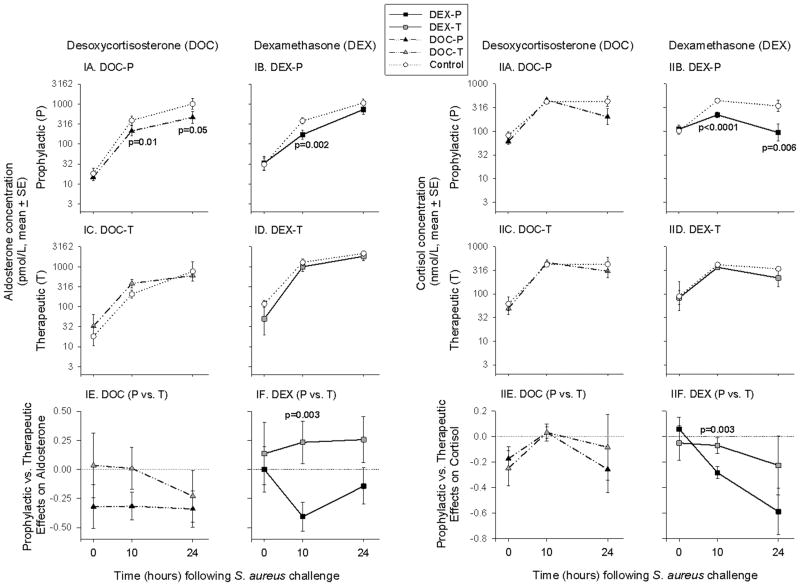Figure 4. Aldosterone and Cortisol.
DOC-P-treated animals had lower mean aldosterone levels at 10 h and 24 h after S. aureus challenge compared to controls (panel IA), whereas DOC-T-treated animals had no significant differences in mean aldosterone levels compared to both controls (panel C) and DOC-P-treated animals (panel E) throughout the study. DOC-P- and DOC-T-treated animals had no significant differences in mean cortisol concentrations compared to controls or to each other throughout the study (panel IIA, C, E). DEX-P significantly reduced mean aldosterone concentration at 10 h after S. aureus challenge compared to both controls (panel IB) and DEX-T-treated animals (panel IF), whereas DEX-T had no significant effects on mean aldosterone concentration compared to controls throughout the study (panel ID). Similarly, DEX-P reduced mean cortisol levels compared to controls at 10 h and 24 h after S. aureus challenge (panel IIB), and also compared to DEX-T-treated animals at 10 h after S. aureus challenge (panel IIF). DEX-T had no significant effects on mean cortisol levels compared to controls throughout the study (panel IID).

